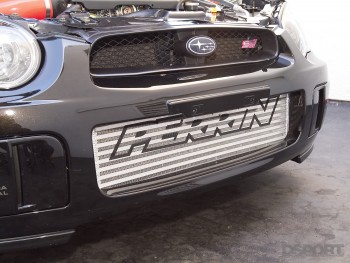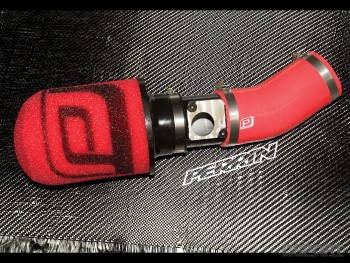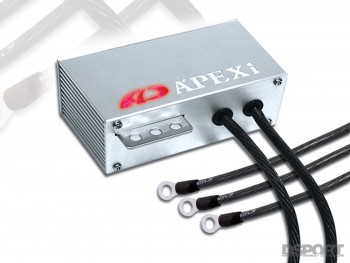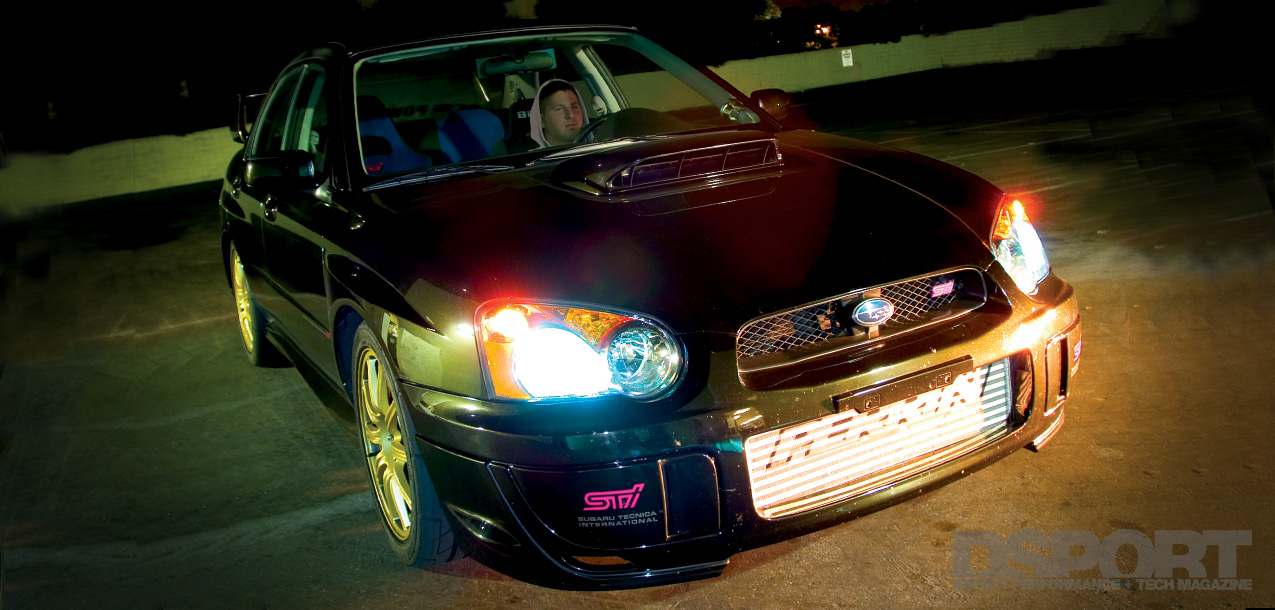For our ongoing battle betweeen STi and EVO-VIII, we were planning on having another round of upgrades for both vehicles. However, things don’t always go as planned in the world of magazines. For this issue, our STi earned a bye-run when our EVO-VIII had to be racked for a clutch upgrade.
Text by Michael Ferrara // Photos by Phil Lam
DSPORT Issue #18
As we set out from the start, our buildups will attempt to achieve peak reliable performance in three different configurations. Our first level will involve the parts and tuning that will help us achieve maximum performance from the stock engine and turbo combination. Our next level will attempt to achieve peak performance with the stock engine and internals. Finally, we will see how much reliable and streetable performance can be obtained by improving the engine itself. Along the way we hope to show the highs and lows of our experience. That way, our readers can share our successes and avoid the costly mistakes which we may inadvertently encounter along the way.
Part One Recap
In part one of the buildup, we equipped our STi with a Magnaflow Titanium exhaust and an Injen intake. Strapped to a Dynamic Test Systems 4-wheel dynamometer, the stock STi generated 264 horsepower at the wheels. Then installed the Injen intake and we were quite happy with the results. Power was increased in all points along the graph with significant gains appearing at about 5200rpm and beyond. Gains were as high as 11 horsepower and peak horsepower jumped to 273.2 ponies. With significant power increases resulting from the Injen intake, we were excited to see what gains the MagnaFlow exhaust would deliver. Once again, we were very impressed with the results. The MagnaFlow exhaust also delivered gains as high as 11 horsepower with the peak horsepower being pushed up by 6.8 horsepower.
The Parts
For part two of our buildup, we decided to build on the success from part one by adding a front-mount intercooler, downpipe and grounding kit.
 In choosing an intercooler system upgrade, there were a number of both stock location and front-mount options. Since we love the aggressive look of a front-mount and have future plans of making some serious horsepower, we restricted our search to the front-mount options. We decided on a PERRIN Performance front-mount intercooler kit for our 2004 STi. This kit uses a core that stretches across the entire front of the bumper cover opening. The kit includes a new box steel bumper support that allows the core to be mounted without requiring any cutting of the metal on the car (only the bumper cover needs to be modified to fit the cooler). The PERRIN Performance system also allows the retention of the factory blow-off valve and recirculation plumbing.
In choosing an intercooler system upgrade, there were a number of both stock location and front-mount options. Since we love the aggressive look of a front-mount and have future plans of making some serious horsepower, we restricted our search to the front-mount options. We decided on a PERRIN Performance front-mount intercooler kit for our 2004 STi. This kit uses a core that stretches across the entire front of the bumper cover opening. The kit includes a new box steel bumper support that allows the core to be mounted without requiring any cutting of the metal on the car (only the bumper cover needs to be modified to fit the cooler). The PERRIN Performance system also allows the retention of the factory blow-off valve and recirculation plumbing.
 As for installation of the system, the instructions and fitment were pretty straightforward. It’s a 99 out of a 100 point system. To earn that final point, we’d like to see a rigid coolant overflow tank (PERRIN Performance supplies a creative overflow reservoir that consists of a piece of silicone hose with machined aluminum end caps and hose clamps). Our solution was to use an overflow tank from a 96-00 Civic. We were able to fit this in the factory location. The PERRIN Performance front-mount intercooler system requires that the intake be switched to the PERRIN short-ram intake. Just for kicks, we checked the fit on the Injen intake and it definitely won’t fit with the PERRIN front-mount in place. The PERRIN short-ram intake uses dual-stage foam filter along with a dyno-developed MAF sensor adapter.
As for installation of the system, the instructions and fitment were pretty straightforward. It’s a 99 out of a 100 point system. To earn that final point, we’d like to see a rigid coolant overflow tank (PERRIN Performance supplies a creative overflow reservoir that consists of a piece of silicone hose with machined aluminum end caps and hose clamps). Our solution was to use an overflow tank from a 96-00 Civic. We were able to fit this in the factory location. The PERRIN Performance front-mount intercooler system requires that the intake be switched to the PERRIN short-ram intake. Just for kicks, we checked the fit on the Injen intake and it definitely won’t fit with the PERRIN front-mount in place. The PERRIN short-ram intake uses dual-stage foam filter along with a dyno-developed MAF sensor adapter.
 On turbo cars, reducing exhaust restrictions improves boost response and power output. The Subaru STi has a total of three catalytic converters between the turbocharger and the exhaust system. We selected a one-piece downpipe that attaches from the turbo to the cat-back portion of the exhaust. This eliminates all three catalytic converters from the factory configuration. In doing so the second O2- sensor must be fooled into reading the correct signal. This is accomplished by using a Helix check-engine-light eliminator. As for the installation of the downpipe, be sure to redirect the A/C evaporator drain away from the downpipe. There is one word of caution with the Helix downpipe, the factory exhaust and some aftermarket systems cannot be used. An exhaust system with a flat (non-doughnut-type) flange must be utilized. Unfortunately, our Magnaflow titanium exhaust is not a compatible flange. Before next installment, we’ll be switching to a compatible exhaust system.
On turbo cars, reducing exhaust restrictions improves boost response and power output. The Subaru STi has a total of three catalytic converters between the turbocharger and the exhaust system. We selected a one-piece downpipe that attaches from the turbo to the cat-back portion of the exhaust. This eliminates all three catalytic converters from the factory configuration. In doing so the second O2- sensor must be fooled into reading the correct signal. This is accomplished by using a Helix check-engine-light eliminator. As for the installation of the downpipe, be sure to redirect the A/C evaporator drain away from the downpipe. There is one word of caution with the Helix downpipe, the factory exhaust and some aftermarket systems cannot be used. An exhaust system with a flat (non-doughnut-type) flange must be utilized. Unfortunately, our Magnaflow titanium exhaust is not a compatible flange. Before next installment, we’ll be switching to a compatible exhaust system.
 The A’PEX Integration Super Grounding System (SGS) connects to the positive and negative end of the battery and three additional grounding points on the engine. Installation was as easy as it gets with the included bracket. Once installed the unit’s LED will illuminate. For the paranoids, don’t worry. The battery drain to power the LEDs on the unit is barely measurable and it will not affect your battery’s state of charge.
The A’PEX Integration Super Grounding System (SGS) connects to the positive and negative end of the battery and three additional grounding points on the engine. Installation was as easy as it gets with the included bracket. Once installed the unit’s LED will illuminate. For the paranoids, don’t worry. The battery drain to power the LEDs on the unit is barely measurable and it will not affect your battery’s state of charge.


